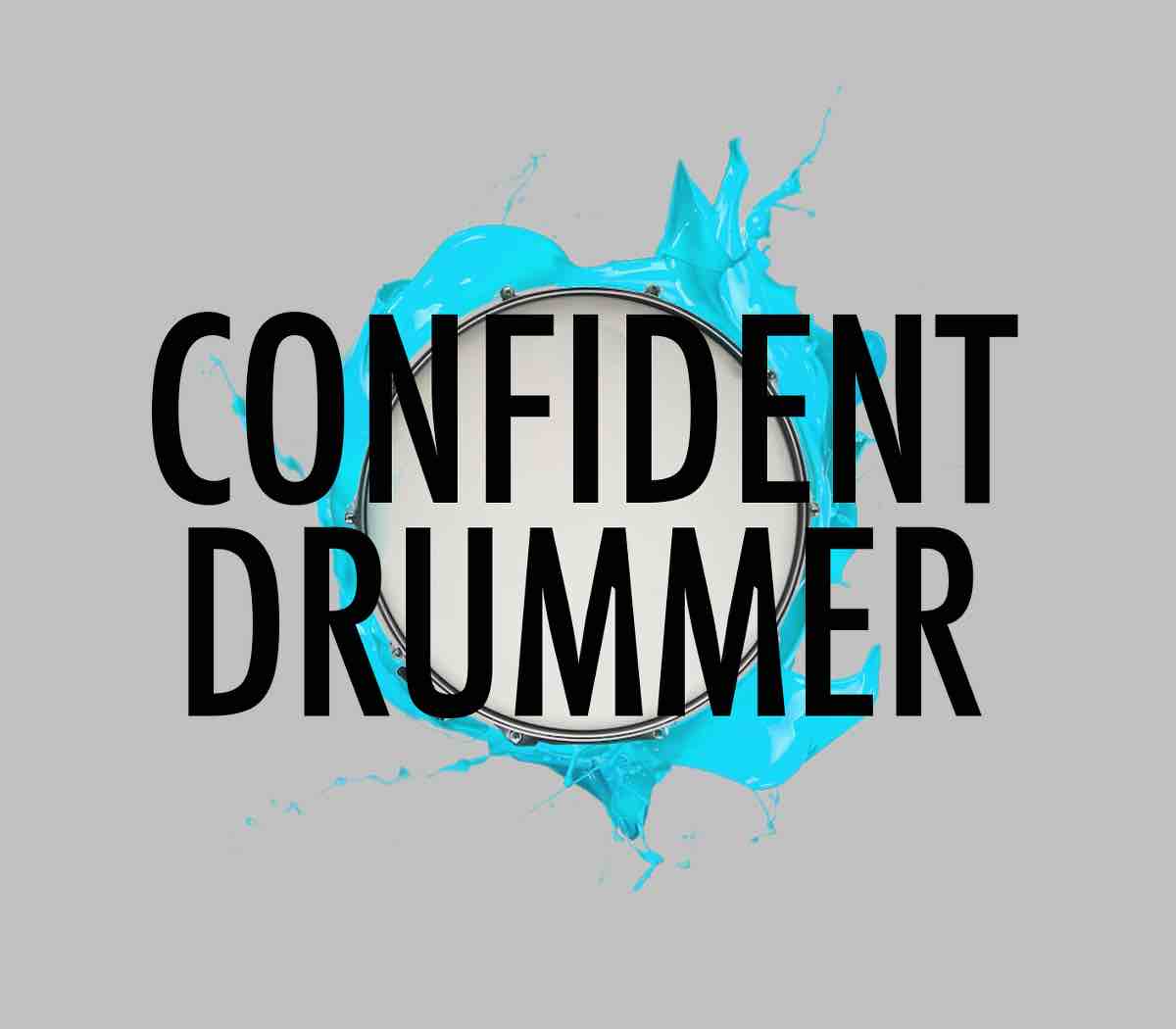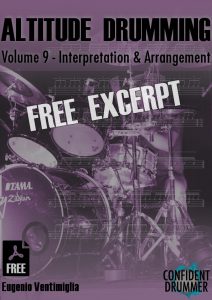Interesting thing about reading music is that it’s not about reading, it’s about interpreting what’s written. When we learn to read rhythmic figures, we discover how to link different symbols to specific note durations and spacings.
Yet, being able to read doesn’t necessarily mean that we know how to turn those notes into music.
To do that we need interpretation skills: therefore being able to interpret a chart essentially means creating and adding what’s not written.
As a matter of fact when we interpret a drum score it’s not enough to play the notes that are there: if we did that, our reading, no matter how accurate, would sound empty and unmusical.
What we need to do is to take the score, which contains about 20% of what we’ll eventually play, and add the remaining 80%, by interpreting the part. Which means, literally, by inventing that 80%.
That’s the focus of the first half of this method.
The other side of the coin is arrangement: the two subjects are related because in order to write amazing drum parts we first need to grasp how to interpret rhythms on our instrument and how to transform any pattern/riff/line into music.
I believe arranging a drum part is one of the most fulfilling aspects of making music with drums and cymbals. When we deal with a song where we are given a melody, a chord progressions and a structure, and we are the ones who have to come up with beats and fills, there is a moment when there’s nothing there yet, and we have the power to create whatever we like and shape the piece in exciting ways.
When listening to music, sometimes we hear things that seem so simple that we think we could have easily done the same or even a better job.
The truth is that listening to a finished product is a completely different experience than having a blank canvas in front of us and having to choose what notes to play, and why and how.
This is why creating a drum part and arrangement is so exciting: we know we are tapping into an infinite potential of expression and we realize the drums have a huge role in defining the meaning of a song and characterize it in a specific way.
Of course, being these such nuanced topics, developing interpretation and arrangement skills requires working on many different levels.
The program is designed to include the most powerful tools and workouts, to cover all the aspects that come into play:
- Rhythmic Interpretation and Reading Exercises.
- Interpretation Methods and Solutions.
- Interpretation of a Drum Chart & Examples.
- Interpretation Practice Scores.
- Section and Ensemble Figures.
- The Setup of Rhythmic Figures.
- Interpretation & Setup Examples in Records (with Transcriptions).
- Arrangement Techniques to Develop Rhythmic & Musical Ideas.
- Evolution of a Groove: Depth, Width, Density.
- Drum Riffs.
- Approaches to Writing a Drum Part: Minimal, Building Up, Creative.
- Arrangement Analysis.
My goal was to create quality content that could really help drummers learn how to write their own parts, beats and fills, while developing a solid understanding of many interpretation techniques.
In total it’s more than 150 pages and 3 hour and a half of video content.
In this free excerpt I’d like to share with you 31 examples picked from the 400+ exercises included in the method. I wanted to arrange this booklet so that it’s like a mini course, that you can use to instantly see results.
You can download it here:
The transcription of all examples, as well as the table of contents of the method, is included in this 16 page PDF.
Each exercise is linked to its video demo, which you can access by clicking on the transcription. If you want to check out the whole 12 minute video demo on YouTube, click HERE.
To find out more and to buy the method you can visit the dedicated page here:
‘Interpretation & Arrangement’ – Altitude Drumming – Volume 9



















